
Lead
Whether it is urban or rural, our family's emphasis on education has always been the first. For most ordinary people, education is the most important parameter for changing birth and destiny. The huge population welfare and willingness to pay have created a market scale of the education industry at a trillion level.
1
National will drive strategic turning point, China's education industry usher in the golden age
China has formed a sound education system . Under the background of rapid economic development and gradual transformation of industrial structure, the demand for talents in China has become more vigorous, and the scale of investment in education has continued to expand. At present, education systems with various levels, forms and disciplines have been formed: including pre-school education and K12 education. (Primary, junior high, high school/secondary), higher education (specialties, undergraduate, master's, doctoral), continuing education, vocational education, and corporate E-learning (enterprise online learning). With the strong support of the state, with the increasing demand for education, the education industry has developed rapidly and the market scale has continued to expand.
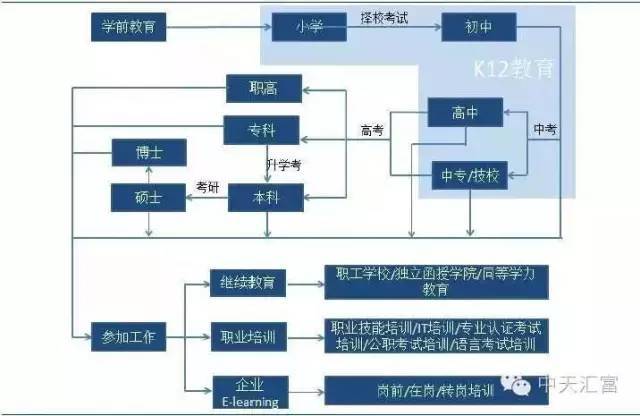
China Education Stage Process
Education industry: national will, strategic turning point . At present, China is in a critical period of industrial transformation. To achieve leap-forward development, the key is to rely on talents and the foundation is education. Education is the cornerstone of national rejuvenation and social progress, and is the basic project to promote innovation and cultivate talents. At present, China's education system cannot fully adapt to the economic and social development and people's educational needs. The task of education development is arduous, and the need for deepening education reform is urgent. To this end, the state and the government regard priority development education as the basic requirement for implementing the scientific development concept, giving priority to ensuring education development in the national strategic development plan, giving priority to ensuring investment in education, and continuously increasing the input of social resources to education. In recent years, China has introduced a large number of education policies and regulations to promote the comprehensive and healthy development of education and reform and innovation, and to improve the quality of education and fairness of education.
China plans to comprehensively promote the development of education at all stages in the next 15 years. The National Medium- and Long-Term Education Reform and Development Plan (2010-2020) proposes the strategic goal of education development: by 2020, the education modernization will be basically realized, and a learning-oriented society will be basically formed, and it will enter the ranks of human resources.

The main goal of China's education development in 2009-2020
2
There is a huge amount of space in China's education market, and investment in education information continues to accelerate.
There are three main sources of funding for the education market in China: the government's fiscal education funds, social education fixed assets investment, and family education expenditures (divided into urban and rural households) . The contribution of the three to the education market is about 50% and 10%. And 40%.
(1) The proportion of government's fiscal education funds to GDP has increased year by year. In 2014, the government's fiscal education funds accounted for 4.5% of GDP. With the gradual implementation of government policies, it is expected that the proportion will continue to rise in the future.
(2) The society's fixed assets investment in education has generally shown an upward trend, but education fixed assets investment accounts for a small proportion of all fixed assets investment, and investment is insufficient.
(3) The educational consumption of urban households in the educational consumption of urban and rural residents is significantly higher than that in rural households.
The total size of the Chinese education market is as high as 6 trillion yuan. According to the data of Tencent Education and China Statistical Yearbook, the total size of China's education market in 2014 was about 6 trillion yuan, of which the government's fiscal education fund was about 2.9 trillion yuan, and the social education fixed assets investment was about 0.6 trillion yuan. The expenditure on family education in rural areas is about 1.6 and 1.0 trillion yuan respectively. It is estimated that by 2017, the total size of China's education market will exceed 9 trillion yuan, and the CAGR for 3 years is 12.2%.
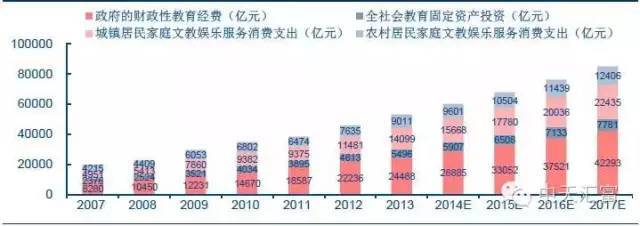
The total size of China's education market (unit: trillion yuan)
The policy of education and informationization has been concentrated, and the informationization of basic education is the top priority .
(1) The State established the “Informatization Leading Group of the Ministry of Education†in 2011, and the Education Informationization Promotion Office is set up to be responsible for the promotion of education informationization. Since then, the Ministry of Education has set annual education informationization work points. In March 2012, the Ministry of Education issued the "Decade of Education Informationization Development (2011-2020)" to provide guidance and general direction for the education informatization in the next 10 years.
(2) Informatization of basic education is the cornerstone of improving national information literacy and is the top priority of education informationization. Focusing on promoting the balanced development of compulsory education, building, applying and sharing high-quality digital education resources as a means to promote the quality digital education resources of each school, improve the quality of education and teaching; help all age-appropriate children and adolescents to be equal, effective and healthy Use information technology to develop self-learning and lifelong learning skills.
"Three links and two platforms" is the key to the construction of education informationization in China . “Three Links and Two Platforms†was the goal of education informationization during the “Twelfth Five-Year Plan†period proposed by State Councilor Liu Yandong in the National Video Information Conference on Education Informationization in 2012, namely “Broadband Network School and School, Quality Resource Class†Communication, network learning space for everyone, and the construction of educational resources public service platform and education management public service platform. The "three links and two platforms" first completed the broadband access of all types of schools and the basic teaching environment under the network conditions; secondly, the educational resources public service platform was used as a carrier to promote high-quality digital education resources and information technology means in teaching. The universal application in teaching and research activities; finally, a social learning space system integrating teachers, students and parents is built into a social, resource and management function. The proposal of "three links and two platforms" reflects the country's high attention to education informatization and the desire to promote education informatization.
3
Online education industry enters fast growth channel
Education informationization welcomes policy dividends, online education (Internet education) market rises strongly
"Online Education" uses the network as a channel to share, disseminate and learn teaching resources, effectively solving the problems of teacher-student resource mismatch, supply and demand mismatch, time and space constraints in China's current education system. "Online Education" can provide personalized education services for different learning needs, and realize the "teaching in accordance with the aptitude" in the true sense. Under the wave of integration of the Internet and traditional industries, online education has also begun to be highly valued by the state, and policies for education informatization have been intensively introduced. The “Education Informationization Decade Development Plan (2011-2020)†launched in 2012 provided guidance and development direction for education informationization. Later, the government introduced six national policies and plans to promote education information. Turn. In addition to the policy dividend, the development of people's online buying habits and the improvement of online payment systems have further promoted the development of the online education industry.
China's online education industry will grow faster than the traditional education industry
According to the GSV Global Education Industry Report, the global online education market will reach $255.5 billion in 2017 and CAGR will be 23%. The scale of China's education market is huge, and the growth rate of Internet education is much higher than that of traditional education. According to iResearch's “2014 Online Education Industry Development Reportâ€: (1) The size of China's online education market in 2014 was 99.8 billion yuan, and it is expected to reach 173.4 billion yuan in 2017, maintaining a compound growth rate of 19.4%; (2) In 2014, the number of online education users was 77.97 million, and it is expected to reach 120 million in 2017, maintaining a compound growth rate of 16.7%.
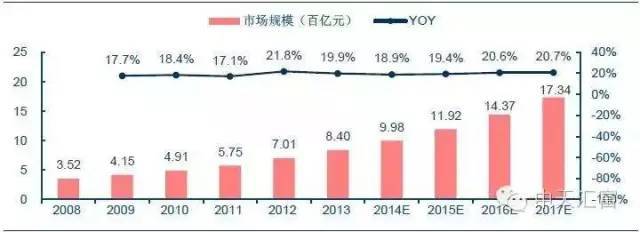
China online education market scale
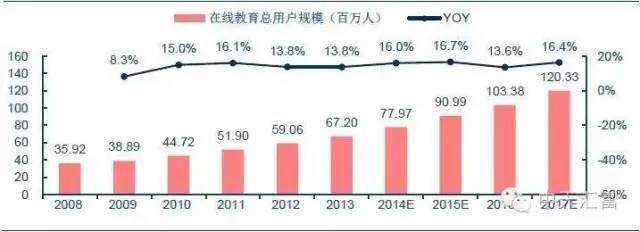
China online education user scale
From the perspective of segmentation, there is a huge space for domestic K12 online education and online vocational education . Since 2010, the domestic K12 online education field has continued to exert strength, and has maintained a growth rate of more than 32%, and it is expected that the growth rate will exceed 38% in the next two years. The K12 field has great market potential as an online education market segment that startups are most eager to compete for. Online vocational education has maintained a growth rate of more than 16% in recent years. It is expected that the market size will exceed 30 billion in 2015. From the perspective of the main audience, white-collar workers with strong professional ability improvement and learning under K12 education are still the mainstream groups that the parties are most concerned about and try to compete for.
4
Pre-school education, K12 education and vocational education: a large base and a vast space
K12, pre-school and vocational education have a large base of students and a huge market space. According to the China Statistical Yearbook, the total population of China in 2013 was 1.36 billion. According to age, the number of preschool, K12, higher, and vocational education in China was 110 million, 190 million, 160 million, and 710 million. . At present, the actual number of preschool, K12, higher, and vocational education in the park/school is about 40 million people, 180 million people, 30 million people, and 90 million people. It has a huge educational population base and a huge market space.
Pre-school education stage: the turning point appears, the policy dividend opens up a broad space
In 2013, China officially began to implement the “Separate Second Child†policy. In 2014, the total number of births in China was 16.87 million. The birth rate also ended its 14-year decline and ushered in the upward turning point for the first time. In 2014, there were 190,000 kindergartens and 40.51 million children in the park in China. The rate of Mao’s admission was about 67.5%. There is still much room for the goal of the national “2016 national pre-school three-year gross admission rate of 75%â€. It is expected that the future pre-school education market is expected to exceed 900 billion yuan, of which kindergarten education and family education are about 4800 and 440 billion yuan respectively. As home preschool education is increasingly valued, companies that offer both preschool and home preschool education solutions are relatively scarce .
K12 education stage: decisive, the Internet wave is surging
In 2013, the number of students enrolled in the K12 stage in China exceeded 180 million, of which the number of students enrolled in primary, middle and high schools was 9,484, 4,488 and 43.7 million respectively. Online education through the distribution of prestigious school resources and cloud service platform is expected to solve the traditional education model, the individualized learning needs can not be met, the teaching resources of the famous schools are difficult to obtain, classroom learning and extracurricular tutoring separation three pain points, so it has a good development prospects. It is expected that the market size of K12 Online Education will reach 26.5 billion yuan in 2017 and 36.5% CAGR in the next 3 years . There are many companies in the online education industry, and the competitive landscape is extremely fragmented. Quality content, user expansion and data closure will be key to the success of the online education platform .
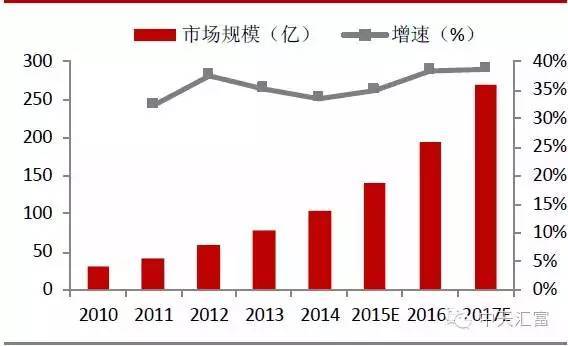
China K12 online education market scale (unit: 100 million yuan)
Vocational education stage: broad prospects, capital dividends help take off
Vocational education is divided into academic vocational education and non-degree vocational education . Vocational education refers to the education of the cultural knowledge, basic theories, specialized skills and professional ethics required for the educated to obtain a certain occupation or production labor. According to the educational purpose, it can be divided into academic vocational education and non-degree vocational education. (1) Academic education refers to vocational school education in various vocational high schools, secondary schools, technical schools, etc. (2) Non-degree vocational education includes public examination training, professional certification examination training, language training, IT training, corporate training and vocational skills training.

Classification of vocational education
The demand for vocational education in China continues to grow rapidly . (1) The scale of vocational education in China has increased rapidly. After nearly a decade of development, China's vocational education ranks first in the world, and the number of college construction and enrollment has increased rapidly. (2) The investment in vocational education in China continues to increase. Since the release of the "Decision of the State Council on the Development of Vocational Education" in 2005, the annual funding for vocational education in China has increased by 18% annually. It is estimated that by 2020, the state's investment in the vocational education industry will remain at a high level, and market demand will continue to grow.
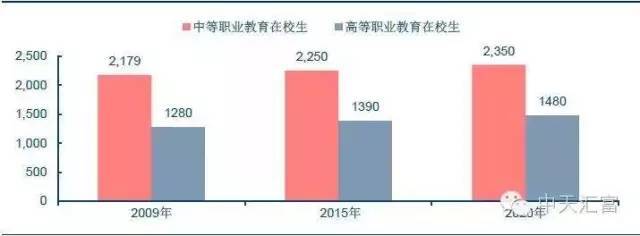
The scale of the number of students in vocational education in China (unit: 10,000)
"Internet +" promotes the development of vocational education information . China's vocational education service is in its infancy, and there is still much room for development in information resources and platform construction, education resource construction, information education and education, and education e-government and standardization. At the end of 2013, the number of vocational colleges in China was 13,600, including 12,300 in secondary vocational colleges and 1,321 in vocational colleges. At present, the penetration rate of educational information is less than 4%. According to the survey information, it is estimated that the market space for education informationization in China's vocational education colleges is about 26 billion yuan, and the educational professional education service market based on education informationization has great potential.
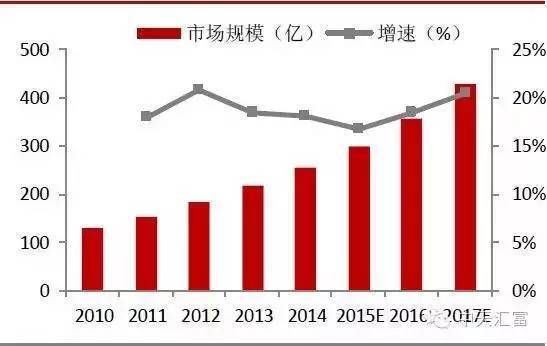
China online vocational education market scale (unit: 100 million yuan)
Policy support and "Internet +" penetration will be the two driving forces for the transformation of vocational education. The policy exerts a high impact on vocational education from the top of the state, while the Internet affects the user's habits from the bottom to the vocational education. Make a difference.
Academic education market keeps growing rapidly
The policy advocates the rapid development of the vocational education market. In recent years, China has paid more and more attention to the development of vocational education, and has successively introduced a series of laws, regulations and support policies. As an important part of China's education work, vocational education has increased investment in vocational education and improved occupations at the national level. The scale of running a school and the conditions for running a school have made the vocational education achieve unprecedented development. At present, there are 2,250 and 13.9 million students in secondary and higher vocational education in China, and the education scale is the first in the world. . According to the statistics of consulting organizations, the educational informationization scale of China's vocational education colleges will reach about 26 billion yuan, and the market potential of vocational education services based on education informationization is huge.
The non-academic vocational education market is poised for growth
Non-degree vocational education has good prospects for development due to the following three reasons:
(1) Diversified learning needs. The non-academic vocational education and training field is complex and diverse. Students have strong autonomy in learning and have higher requirements for time and form flexibility of learning. This provides more space for the design and development of non-academic vocational education products, especially The launch of Internet-based vocational education online products provides a new direction for the development of the future non-degree vocational education market;
(2) The rigid demand guarantees market space. Because non-degree vocational education is mostly qualification training, it is often the rigid demand of users during their employment, the purpose of learning is clear, the user's ability to pay is strong, and the market space is guaranteed;
(3) The scale is still small and has great potential. At present, the overall market size of non-degree vocational education in China is still small, and the market penetration rate is still low. Moreover, individual market segments, such as enterprise management training industry and financial professional training market, have the characteristics of rapid market demand growth and industry leaders, and there is much room for future development.
In general, in the context of rapid economic development and industrial restructuring, China's talent demand has become more vigorous, and the scale of education investment has continued to expand. Together with the huge population welfare and willingness to pay, it has created a market scale of the education industry at a trillion level. The “Separate Second Child†policy has helped the pre-mechanics education to usher in a strategic turning point. The deep integration of the Internet and K12 education and vocational education is expected to subvert the original business model. Under the guidance of pre-school education, K12 education and vocational education, China's education industry is expected to maintain rapid growth. Trend .
Source: New Silk Road Finance
The children's study table and chair set is furniture for children aged 3-18 to learn to write homework. The table has a lot of storage space. The table board is made of solid wood core material. The table board can be adjusted and the table legs can be raised and lowered to meet various requirements. Children of height can do homework and draw pictures; the table can be used from kindergarten to university. Fashionable color schemes make children love to learn more. Because of the large storage space, children can also cultivate good storage ability. 
Study Desk,Adjustable Height Study Desk,Modern Kids Study Desk,Ergonomic Children Furniture Sets
Igrow Technology Co.,LTD , https://www.szigrowdesks.com